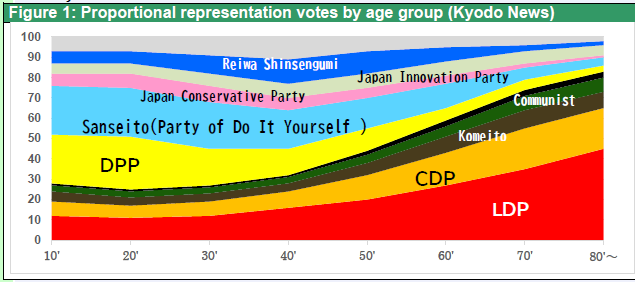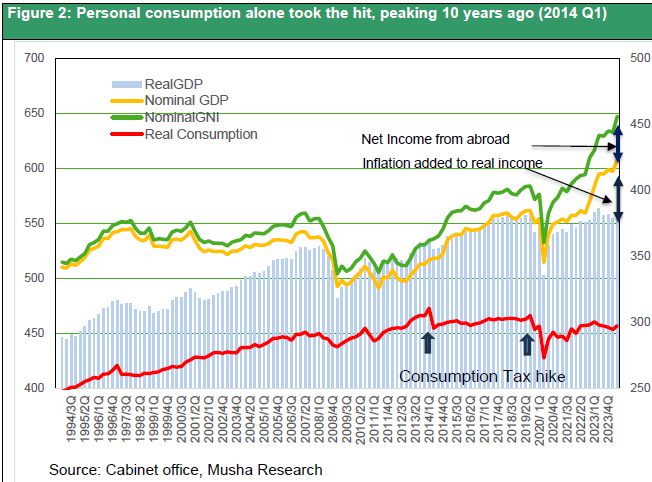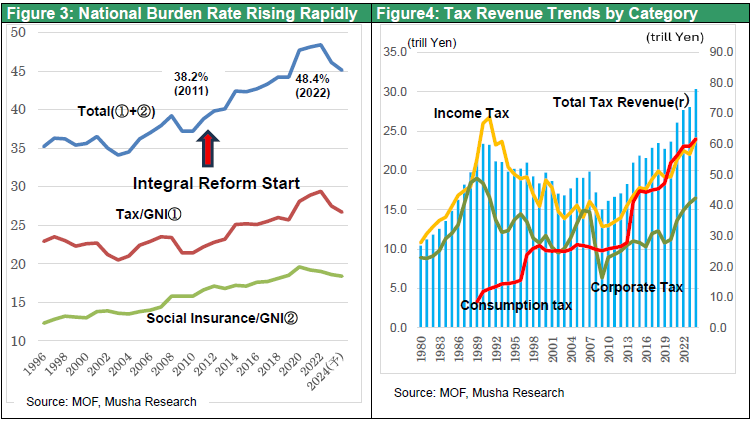Aug 07, 2025
Strategy Bulletin Vol.384
Will the Trump revolution happen in Japan too?
Ishiba's strategy to prolong his tenure as prime minister: superficial measures will not be enough to weather the storm
In the July 20 Upper House election, the Liberal Democratic Party and Komeito fell to minority status in the Upper House, following their loss of majority status in the Lower House. Prime Minister Ishiba has refused to step down, arguing that a comprehensive review of the election results is necessary. Meanwhile, public opinion polls show growing support for Ishiba to remain in office (though the majority still calls for his resignation). 1) Liberal-leaning individuals are concerned that Ishiba's resignation could lead to the rise of hawkish figures like Takaichi, 2)The responsibility for the LDP's defeat lies with groups that have criticized Ishihara, such as the former Abe faction, which has avoided addressing issues related to politics and money, and that criticizing Ishiba is an attempt to shift blame, 3)The Constitutional Democratic Party(CDP), the largest opposition party, also lost votes in the election, and Ishiba's resignation, which could lead to a dissolution of the Diet and a general election, is not a good strategy for CDP.
Even though majority remain the camp of his resignation in the public poll, the argument for allowing him to remain in office is gaining momentum, as Ishihara intended. However, we cannot overlook the tectonic shift that is taking place, which is far removed from these superficial political arguments.
The tectonic shift in voter sentiment revealed by the Upper House election
This Upper House election has three historical characteristics: 1) the Liberal Democratic Party and Komeito Party's fall to a minority ruling party following last year's Lower House election, 2)the rise of the three reformist conservative parties (the Democratic Party for the People, the Sanseito Party(Party of Do It Yourself ), and the Japan Conservative Party), and 3) the decline of the liberal forces. According to exit poll data on age-specific proportional representation voting preferences (Kyodo News), the LDP-Komeito support rate stands at 16% for those aged 10–30, 20% for those in their 40s, and 26% for those in their 50s. In contrast, the combined support rate for the three reformist conservative parties is over 50% for those aged 10–30, 38% for those in their 40s, and 31% for those in their 50s, surpassing the LDP-Komeito coalition across all working-age generations. Due to continuous support for the ruling party among the elderly, the total number of votes in the proportional representation system is keenly contested, with the LDP and Komeito receiving 18.01 million votes and the three reformist conservative parties combined receiving 18.02 million votes. However, public sentiment has clearly shifted.
Figure 1: Proportional representation votes by age group (Kyodo News)

The Trump phenomenon, a major shift in public opinion, and the anger of the socially disadvantaged, which emerged for the first time in the United States
This shift in public opinion is similar to the Trump phenomenon in the United States. In the United States, Trump, who was considered a fringe candidate, was elected president in 2016, lost to Biden in 2020, but in 2024, he formed a majority in both houses of Congress and is conducting major reforms. The forces that propelled Trump to the presidency were the socially disadvantaged, low-educated population, a group that had never before appeared in U.S. history. The influx of foreign products led to the decline of U.S. manufacturing, causing the middle class of factory workers to fall into decline. In America, once a land of hope where everyone—including former slaves and immigrants—could succeed regardless of race, a new class of people left behind had emerged for the first time.
The sharp increase in despair-related deaths and the decline in U.S. life expectancy relative to other developed countries
The relative decline in U.S. life expectancy vividly illustrates the existence of this socially disadvantaged group. While life expectancy in other developed countries is increasing, the U.S. is the only country where life expectancy is not increasing and is lagging far behind other countries. This is due to the increase in despair-related deaths (drug overdoses, suicides, and alcohol-related deaths). This has led to policies such as raising tariffs to bring manufacturing back to the U.S. and tax cuts.
The anger of Japan's socially vulnerable working-age generation
In the recent Upper House election, it became clear that even in Japan, where inequality was small and divisions were not easily visible, socially vulnerable groups were emerging and dissatisfaction was growing. In Japan, the vulnerable are the working-age generation. Japan's real household consumption peaked at 310 trillion yen in the first quarter of 2014, just before the consumption tax hike (from 5% to 8%) in March 2014, and has never exceeded that level since. It remains at a level of 4% below the peak of 10 years ago, continuing an unusual slump. During this period, corporate profits have increased by 2.4 times, stock market capitalization by 3.2 times, and general account tax revenue by 1.6 times, indicating that households have been sacrificed. While the spring wage increase rate has risen from around 2%in the past decade to 5.1% in 2024 and 5.2% in 2025, real income remains negative due to inflation exceeding 3% and the heavy burden of public (tax and social insurance premium).
The “Integrated Reform of Social Security and Taxation” launched in 2012 caused the national burden rate (the ratio of taxes and social insurance premiums to national income) to surge from 38.8% in 2011 to 48.4% in 2022—an unprecedented increase worldwide—and it is projected to remain at a high level of 46.2% in 2025, directly impacting household consumption. The increased consumption tax and social insurance premiums, both of which have strong regressive characteristics (placing a heavier burden on low-income earners), coupled with the inflexibility of tax collection in response to economic fluctuations, have significantly suppressed consumer spending. Taxes inherently possess a built-in stabilizer function that helps stabilize the economy, reducing tax revenue during economic downturns to mitigate income declines. However, Japan's tax authorities, which focus solely on tax collection, have effectively neutralized this function.
Figure 2: Personal consumption alone took the hit, peaking 10 years ago (2014 Q1)

The exposed high-burden mechanism
This hidden high-burden mechanism was exposed through the internet and social media, bypassing the academic circles and major media outlets influenced by the Ministry of Finance, igniting the anger of the working generation. Today, the working generation, who no longer read newspapers or watch TV, obtain information primarily through the internet and social media. Looking at Dentsu's advertising revenue research for 2024, while traditional media such as TV and newspapers account for 2.3 trillion yen, the internet accounts for 3.6 trillion yen, demonstrating the overwhelming superiority of online media in terms of information dissemination.
Figure 3: National Burden Rate Trends (%)
Figure 4: Tax Revenue Trends by Category (Trillion Yen)

Information revolution
This could be described as an information revolution. The public, which had previously been at a disadvantage in terms of information gathering and judgment, has now gained equal access to facts and knowledge as experts and major media outlets through the internet. On the other hand, the information elite, who had previously held a dominant position within the existing system, are losing their influence.
The information revolution is the Trump phenomenon itself. Despite being thoroughly criticized by traditional media and experts, Trump used the internet and social media to spread his message and gain popular support. This aligns with anti-authority and anti-establishment sentiments. Trump's claims of being anti-Washington and anti-Deep State, along with the MAGA movement supporting him, are products of the internet and social media era. When viewed in this light, it becomes clear that the Trump phenomenon is spreading to Japan, and this trend is irreversible.

